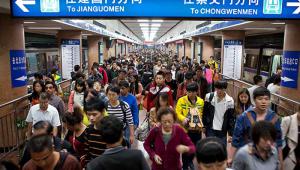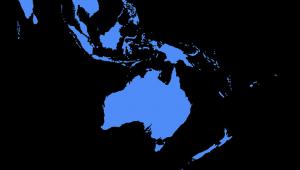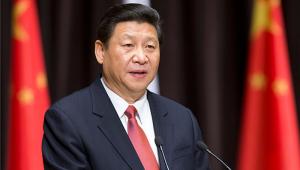In its annual Asian Development Outlook, published today, the bank forecast 5.7% GDP growth across the region across in both this year and the next, down from 5.9% in 2015.
Shang-Jin Wei, the ADB’s chief economist, said China’s more moderate growth and an uneven global recovery are weighing down the region’s overall performance. But he noted that Asia Pacific will continue to contribute over 60% of total global growth.
“Countries across the region should continue to implement productivity-enhancing reforms, investment in under-supplied infrastructure and sound macroeconomic management to help increase their growth potential and insulate themselves from global instability,” he said.
The ADO included a special chapter on potential growth, the sum of productivity and labour force growth, both of which have fallen since the financial crisis.
Wei said that many developing economies in Asia still have tremendous room to use structural reforms to remove distortions in labour, capital and land markets and improve incentives for private sector investment, all of which increase productivity.
Implementing productivity enhancing reforms could increase growth potential by up to 0.7 percentage points per year during the next decade, the ADB said.
This could provide a counter balance to the array of risks the ADB said threaten Asia’s economies, including softer commodity prices, weak growth in emerging markets, potential interest rate hikes by the United States Federal Reserve, global financial market volatility and low global demand.
The bank said low commodity prices, including oil and food, are keeping price pressures low, with inflation set to rise to 2.5% in 2016 and to 2.7% in 2017 – compared to 2.2% last year – as domestic demand strengthens.
Asia’s current account surplus on the other hand is set to shrink from the equivalent of 2.9% of regional GDP in 2015 to 2.6% this year and 2.4% the year after due to subdued demand and low commodity prices.
Slowing exports, along with labour supply falls and a rebalancing of the economy away from manufacturing, mean China’s economy will grow by 6.5% in 2016 and 6.3% in 2017, down from 6.9% in 2015, the ADB said.
This could create a 0.3 percentage point drag on growth in the rest of the region, the ADB estimated. Earlier this month the bank called for bold action from policymakers, warning the Chinese slowdown could translate into a 1.8% decline elsewhere in developing Asia at worst.
The ADB called for supply-side reforms in China, including improvements to labour market flexibility, to boost moderating growth in the world’s second largest economy.
The bank said India is set to remain the world’s largest fastest growing economy, despite a slight dip in growth in the 2016/17 fiscal year. It highlighted that growth potential could be pushed up even further with continued reforms particularly in unifying the tax regime, improving labour market regulation and opening up to further foreign direct investment and trade.
Indonesia is set to lead the way on growth in Southeast Asia, which overall is set for a stronger output, seeing an increase from 4.4% growth in 2015, to 4.5% this year and 2.8% in the next.
Indonesia’s efforts to ramp up its investments in infrastructure and implement policy reforms to spur private investment are already showing positive results, the bank said, and will do so in future if the country’s government presses ahead with plans.
The ADB said the Philippines is also on track to see strong growth continue this year and next year, in spite of external headwinds and complications from the El Niño weather pattern, currently wreaking havoc throughout the world.
It anticipates the Philippines growth will rise from 5.8% in 2015 to 6% this year and 6.1% in 2017, driven by robust domestic consumption and investment.
Cambodia, Laos and Myanmar are all also expected to enjoy strong growth over the next two years, while the ADB said Sri Lanka’s growth can recover this year with fiscal reforms, private sector investment and potential IMF support.
The ADB said Pakistan’s reform and stabilisation measures will boost the country’s economy, and encouraged the government to stay the course.
Both Mongolia and Tajikistan’s growth is set to decline, with the ADB urging reforms to meet key challenges.
Pacific economies also face tighter fiscal conditions this year, the ADB warned, with low commodity prices and disaster-related issues putting pressure on the region’s economies.














